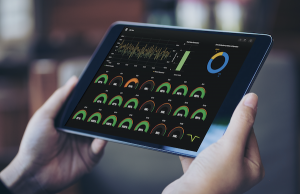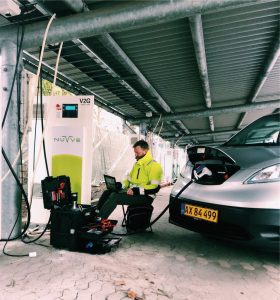 Nuvve’s teams are all working remotely, no more office meetings, no more chats around the coffee machine until health authorities allow us back. Our teams at Nuvve are based on multiple continents, however each employee is well equipped to be working from home. All of their tools are software based and they are well versed in the art of conference calls at any time of day…even with kids and pets in the background.
Nuvve’s teams are all working remotely, no more office meetings, no more chats around the coffee machine until health authorities allow us back. Our teams at Nuvve are based on multiple continents, however each employee is well equipped to be working from home. All of their tools are software based and they are well versed in the art of conference calls at any time of day…even with kids and pets in the background.
As we’ve been staying at home, so have our customers in California, UK or Denmark to name a few. Some customers have taken their electric vehicles (EV) with them and parked them at home. If they don’t have a vehicle-to-grid (V2G) charger at their residence, we can’t yet operate them there. However, due to the CoViD 19 outbreak, we are finding that most of our fleets are professional vehicles who are now left in their parking lots at work, and not driving the normal miles they do every day. These EVs are therefore plugged into their V2G chargers for much longer hours than usual.
We always prioritize driving. That means that at any time when our customers want to drive, we always ensure that they have the level of battery charge they need to make their trips. After all, it’s a electric vehicle first…it just happens to have a large battery that can also be used to serve the grid. Our software and mobile application ensures driving needs are prioritized above all. However at Nuvve, we love when they are parked and plugged-in to a V2G charger; and for most of our vehicles that is about 95% of the time. This allows us to control the rate of charge and discharge of the battery and provide grid or building-level services depending on the site.
 In Denmark the government took drastic measures very early on to contain the spread of the virus by keeping everyone at home. Our operations manager, Paul Chapman, called each fleet customer to understand their new driving needs and policy regarding the workforce and the essential drives they would have to take under the new conditions. There is only so much prediction algorithms can do, when you are facing new unforeseen circumstances, machines and AI are not that useful, at least not yet.
In Denmark the government took drastic measures very early on to contain the spread of the virus by keeping everyone at home. Our operations manager, Paul Chapman, called each fleet customer to understand their new driving needs and policy regarding the workforce and the essential drives they would have to take under the new conditions. There is only so much prediction algorithms can do, when you are facing new unforeseen circumstances, machines and AI are not that useful, at least not yet.
Forecasting capacity is a must when providing energy capacity to the electric grid. Nuvve’s technology allows us to deliver precise and reliable energy capacity from seemingly unpredictable resources: cars and trucks. Nuvve’s Grid Integrated Vehicle aggregation platform (GIVe) is a product of years of development and testing with electric utilities and system operators. In Denmark, Nuvve delivers a complex service called Frequency Controlled Reserve Normal (FCR-N) to Energinet, the Transmission System Operator for Denmark whose main mission is to coordinate energy markets to keep the lights on across the country. Nuvve has been delivering FCR-N to Energinet on a daily basis for over 3.5 years now, the first and longest ongoing commercial deployment of V2G technology in the world.
Paul Chapman, through his phone calls, re-assured all of his customers that V2G will continue with their vehicles during the period of confinement of their workers. He also learned that several customers would be leaving more vehicles than usual on the parking lot during the day and connected to their V2G chargers. Paul came up with an updated capacity plan for the fleet which would override the usual model and increase the capacity of delivery to Energinet during the day-time. As a result, since the beginning of the confinement period in Denmark, Nuvve has been able to deliver above 50% of its fleet capacity during the daytime, a period which is usually low on V2G capacity at around 10% as vehicles are driving. At night too, capacity has also increased a little since night-time driving vehicles are also grounded.
The ability to be in touch with customers, provide swift support and coordination has enabled Nuvve to deliver a stronger energy capacity service to the grid while keeping our customers updated and aware of our actions. We are all hoping to be able to get back to work soon, but it’s great to see that our electric vehicles can keep contributing to the stabilization of the grid even when we are locked in at home.




